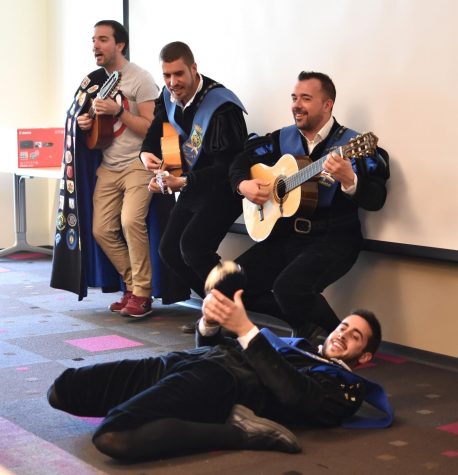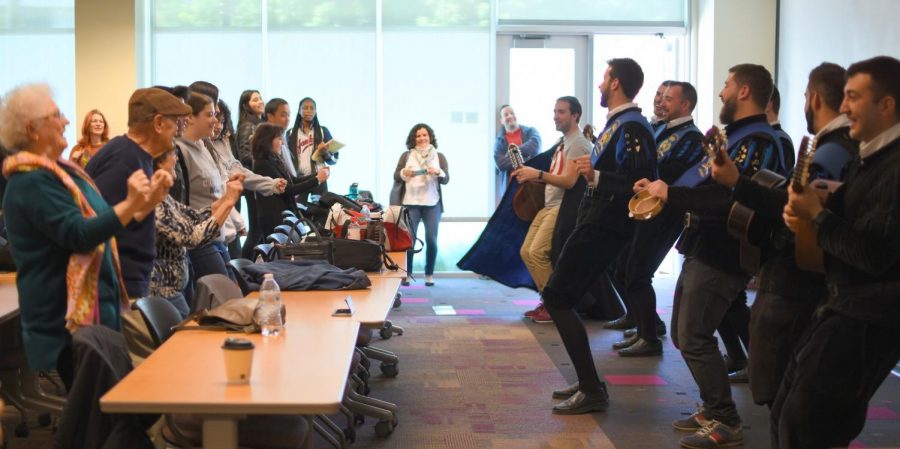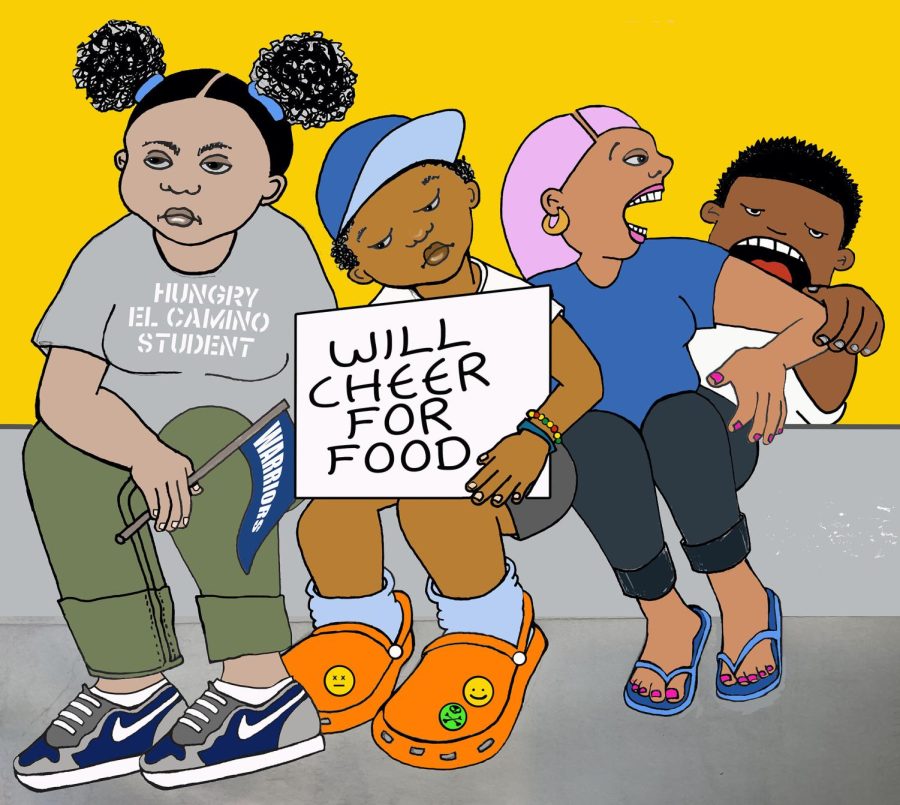On Thursday, Feb. 22, a group of eight merry male students from Granada, Spain descended upon a packed and curious audience in the Distance Learning Center of the EC campus.
Wearing dashing 16th century university clothing such as cloaks, doublets, petticoat breeches, tights and boots, they started unpacking traditional musical instruments such as Spanish mandolins, guitars, and tambourines.

Then the show began. Andrés García Martínez, the group spokesman, gave a rollicking introduction.
A “tuna” is a Spanish tradition from as far back as the 13th century involving groups of needy university students who sing accompanied by traditional instruments in order to earn money to pay for their studies.
They are often hired by suitors to woo the object of their affection with romantic serenades. Each group belongs to a specific department in a given university. Each senior member is called a “tunante” or “tuno”. Rookies are called “caloiros” and perform all the less desirable tasks.
This particular group consisted of students from the Science Department of the University of Granada. Nowadays, these modern amateur minstrels are more often motivated by the social and fun aspects of the tradition.
A tuna is somewhat akin to a fraternity and it is a conduit to play music, to socialize, to travel to new places, and to meet new people (especially young ladies). Tunantes tend to be extroverted, cheerful, entertaining, and cheeky types. They wear a sash called “beca”, in the color of their department, embroidered with the seal of their university. They also wear a cape displaying the shields or seals of the cities and countries which they have visited, in addition to sewn ribbons representing parents, friends, sweethearts or conquests.

When asked why this group carried no ribbons, Mr. Martínez replied, tongue-in-cheek, that “it is because we are all too ugly”. In fact, today’s tunas are often hired for events resembling sorority bachelorette parties.
They sang classic songs such as “Granada,” “Clavelitos,” and crowd-pleasers like “Bésame mucho,” “Viva España,” and “Guantanamera,” with fine tenor solos. They even took audience requests, gamely playing the Macarena.
Along the way, the caloiro was given the thankless task to find blushing reluctant dance partners from the audience. Concluding on an educational and participative note, the tunantes taught the receptive audience of mostly Spanish 1 students a series of fruit names in Spanish, through a catchy combination of chants and dance steps.
This event was made possible by Pr. Silvia Ribelles de la Vega from EC’s Spanish Department, in conjunction with Maricruz Cummins, the president of Casa de España, a private local nonprofit organization promoting Spanish culture in Los Angeles.






